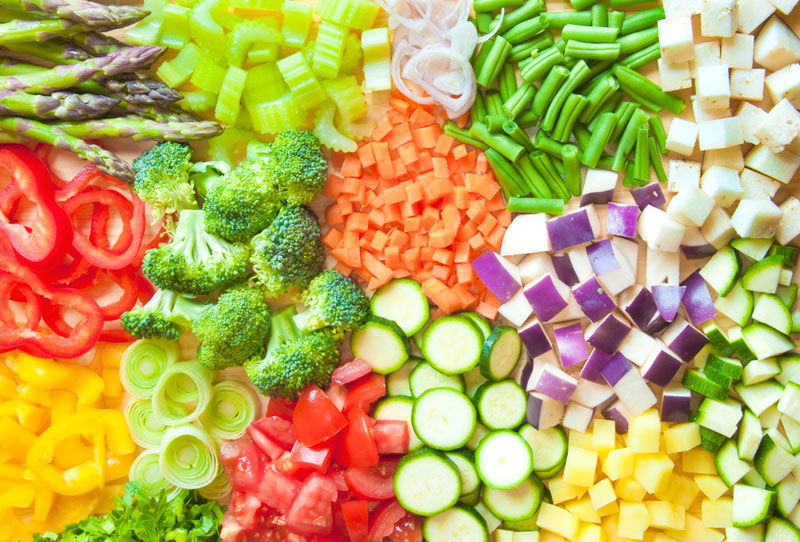How Does Listeria Get into Veggies?

About 30,000 cases of precut vegetables are being recalled in many Southeastern states because they could be contaminated with Listeria. But how, exactly, do these bacteria get into veggies?
This week, the food manufacturer Country Fresh announced a recall of several of its vegetable products — including precut onions, mushrooms and peppers — after one of its products being sold in a Georgia grocery store tested positive for Listeria bacteria. The recall affects products sold at a number of grocery stores — including Walmart, Harris Teeter and Winn-Dixie — in nine Southern states (Alabama, Florida, Georgia, Kentucky, Mississippi, North Carolina, South Carolina, Tennessee and Virginia).
Listeria is found naturally in soil and water, and animals can carry the bacteria without appearing sick, according to the Centers for Disease Control and Prevention. Raw vegetables can become contaminated with Listeria either through contact with soil or with animal manure that is used as fertilizer, according to the Mayo Clinic. [Top 7 Germs in Food That Make You Sick]
From there, Listeriamay get into a food processing factory, where it might live for years on equipment, according to the CDC. Unlike many other types of bacteria, Listeria can grow in the colder temperatures of refrigerators and freezers. "It's a pathogen that's particularly problematic in food-processing plants because it really likes cold, moist, dark environments," Benjamin Chapman, a food safety expert at North Carolina State University in Raleigh, told Live Science in a 2015 interview.
Other foods that have been historically linked with Listeria outbreaks include raw milk, unpasteurized soft cheeses and deli meats, Chapman said.
So far, there have been no reported cases of anyone becoming sick with Listeria from Country Fresh's recalled vegetables, Country Fresh said in a statement.
But Listeria infections can be serious, and even deadly, particularly for certain groups of people, including young children, pregnant women, the elderly and people with weakened immune systems. The infection can cause fever, muscle aches and diarrhea, and in pregnant women, it may cause miscarriage or stillbirth, the CDC says.
Get the world’s most fascinating discoveries delivered straight to your inbox.
The CDC offered the following general recommendations to reduce the risk of Listeria infection:
- Rinse raw produce, including fruits and vegetables, before eating, cutting or cooking.
- Use a produce brush to scrub firm vegetables, such as melons and cucumbers.
- Dry produce with a clean cloth or paper towel.
- When preparing food, separate uncooked meats from vegetables and cooked foods.
- When you handle uncooked foods, be sure to wash your hands afterward, as well as the knives and cutting boards you used for the foods.
- Do not drink unpasteurized milk.
- Heat ready-to-eat foods and leftovers until they are steaming hot.
- People at higher risk of infection, such as pregnant women, should not eat hot dogs, luncheon meats, cold cuts or other deli meats unless they are heated to an internal temperature of 165 degrees Fahrenheit (74 degrees Celsius). They should also avoid eating soft cheeses, unless the label says it's made with pasteurized milk.
Original article on Live Science.

Rachael is a Live Science contributor, and was a former channel editor and senior writer for Live Science between 2010 and 2022. She has a master's degree in journalism from New York University's Science, Health and Environmental Reporting Program. She also holds a B.S. in molecular biology and an M.S. in biology from the University of California, San Diego. Her work has appeared in Scienceline, The Washington Post and Scientific American.



